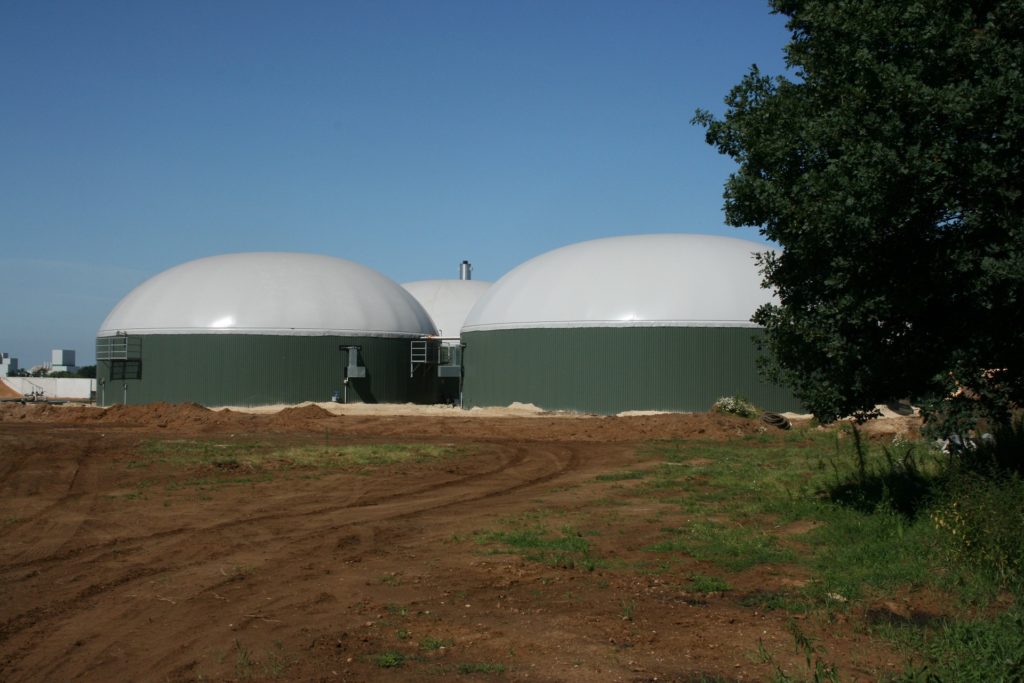Biogas: A more sustainable solution to fossil fuels
Biogas is a renewable energy source produced when anaerobic bacteria break down organic materials. It is different from natural gas as natural gas is a fossil fuel, while biogas is a renewable energy source. Its main components are methane and carbon dioxide. However, it contains slightly less methane than natural gas does. Natural gas almost entirely consists of methane (98 per cent) while biogas only contains between 55 to 90 per cent methane.
Biogas is also different to liquefied petroleum gas (LPG). LPG is made from fossil fuels. It is artificially produced and consists of propane and butane.
Biogas has several uses. It can be used for electricity generation, or as a fuel for cooking and heating. It can be transported in a natural gas pipeline to replace natural gas. Biogas can also be used for waste management in agriculture. It can also be used in a boiler to produce hot water or steam, or in a combined heat and power plant to produce heat and electricity.
There are about 500 biogas plants in South Africa. The industry is small. But, Minerals and Energy Minister Gwede Mantashe has said that “biogas holds huge potential in South Africa” and could be distributed across the country’s industrial centres.
Biogas as a renewable energy source
The United States Energy Information Administration defines renewable energy as “energy from sources that are naturally replenishing but flow-limited; renewable resources are virtually inexhaustible in duration but limited in the amount of energy that is available per unit of time”.
Biogas meets this definition because it uses waste from humans and animals, and waste is a resource that is not likely to run out. On the other hand, natural gas is a non-renewable resource because it takes millions of years to produce and its supply is, therefore, limited. LPG is produced when other fossil fuels, like gas and oil, are refined.
Unlike natural gas and LPG, biogas does not emit greenhouse gases. It has the potential to reduce greenhouse gas emissions by 2030 worldwide, according to the World Biogas Association. This is because it recycles organic waste.
Industry research indicates that biogas could create 30,000 jobs in South Africa and reduce national greenhouse emissions by two per cent. It also contributes to the sustainability of the economy by being an essential part of the circular economy.
Biogas vs natural gas
Biogas is formed through the processing of sustainable, organic sources, like animal and plant waste. It is carbon neutral, while natural gas emits greenhouse gases. It is more sustainable than natural gas because producing it does not harm the environment.
On the other hand, natural gas is a fossil fuel. It is formed through the decomposition of animal and plant remains over millions of years. It is only found deep underground and must be extracted by drilling. Drilling for natural gas, and all the infrastructure required, can have significant and detrimental consequences for the environment.

Anaerobic digestion
Low oxygen concentration in a natural environment causes the production of biogas. This process is otherwise known as anaerobic digestion. In other words, anaerobic digestion happens when bacteria break down organic matter in an environment where there is little or no oxygen.
Organic matter, such as manure from cattle, is collected, correctly sized and all contaminants, like packaging, are removed. The organic matter is then fed into an anaerobic digester. The gas from the digester is collected and can be used for fuel. The biogas may need to be treated for hydrogen sulphide if there are large amounts of sulphur in the organic material.
There are many different types of anaerobic digesters. There are four main types that are currently commercially available. The covered anaerobic lagoon digester is sealed with a flexible cover. Methane produced from the anaerobic digestion process is piped to a gas combustion device where it can be used for fuel. A plug flow digester consists of a narrow concrete tank. The tank collects the organic material, and a flexible or rigid cover collects the methane. A plug flow digester is typically used in manure collection.
A complete mix digester is used for wet organic matter that contains eight to 12 per cent solid material. It consists of a large tank covered by a flexible or solid top, where the biogas is collected. The organic material is mixed to prevent the waste from settling. A plug flow digester is similar to a complete mix digester, except the plug flow digester takes in more solid waste, so it does not need to mix the waste mechanically to keep it from settling.

How different countries around the world use biogas
Anaerobic digestion has been around for centuries. India is thought to have used the first anaerobic digester in 1859 in a leper colony to turn human waste into electricity. But, the technology goes back even further than this. The Assyrians used anaerobic digestion to heat bathwater, anecdotal evidence suggests.
There is enormous, untapped potential for biogas globally. Biogas makes up only a fraction of the world’s eligible feedstocks. About 20 per cent of all the world’s gas needs could be taken care of if the world’s biogas potential is reached. Biogas has the potential to provide a clean source of fuel for cooking for nearly 200 million people in the developing world by 2040. Half of these people are in Africa. This is according to the International Energy Agency’s World Energy Outlook Report 2020.
The global biogas market was worth USD $24.03 billion in 2020. Demand for biogas decreased in 2020 due to the COVID-19 pandemic.
Biogas production and carbon dioxide
Natural gas and biogas both produce carbon dioxide, but biogas is carbon neutral. This is because the carbon dioxide produced by biogas comes from the carbon dioxide already present in the organic matter. In other words, it does not produce any new carbon dioxide into the atmosphere. Natural gas releases carbon dioxide when it is burned, adding to the amount of carbon dioxide in the air.
Natural gas produces less carbon dioxide than burning other fossil fuels, like coal. However, it releases high amounts of methane – a greenhouse gas – that could offset any potential benefits from reducing the amount of carbon dioxide in the atmosphere. Natural gas contributes to climate change, but biogas does not.
Biogas’ availability in South Africa
The South African biogas industry is still in its infancy, according to the green economy non-profit, GreenCape. Only a few of the country’s 500 biogas plants are used in commercial or industrial operations. About 200 plants are at wastewater treatment works, and the other 300 are used for other purposes.
The first commercially viable biogas plant was connected to the National Grid in October 2015.
There is a general lack of experience in this sector, including in the construction, development and management of supporting infrastructure in South Africa. This is mainly due to the low levels of interest in the industry, according to GreenCape.
But, there are several compelling reasons why the market should grow. It is becoming more difficult to dispose of some kinds of waste, such as waste from abattoirs in ordinary landfills. Fertiliser prices are also rising.
There are also indications that the South African government wants to grow the industry to help the country cut down on its waste.
The South African government released a National Waste Management Strategy in 2020, aiming to help the country manage its waste. The strategy envisages reducing the total amount of rubbish disposed of in landfills by 40 per cent in five years through recycling, reuse and alternative waste treatment. The government wants biogas to account for 40 per cent of organic waste by 2025.
Related Articles
Poaching is not the only reason rhinos may go extinct
The ongoing effects of climate change may cause rhinos to go extinct unless adaptation measures are implemented, according to new research.
‘Climate change the biggest threat to health in the 21st century’
Experts say climate change is the biggest threat to health in the 21st century. In South Africa, many lives are already being lost to extreme weather.




